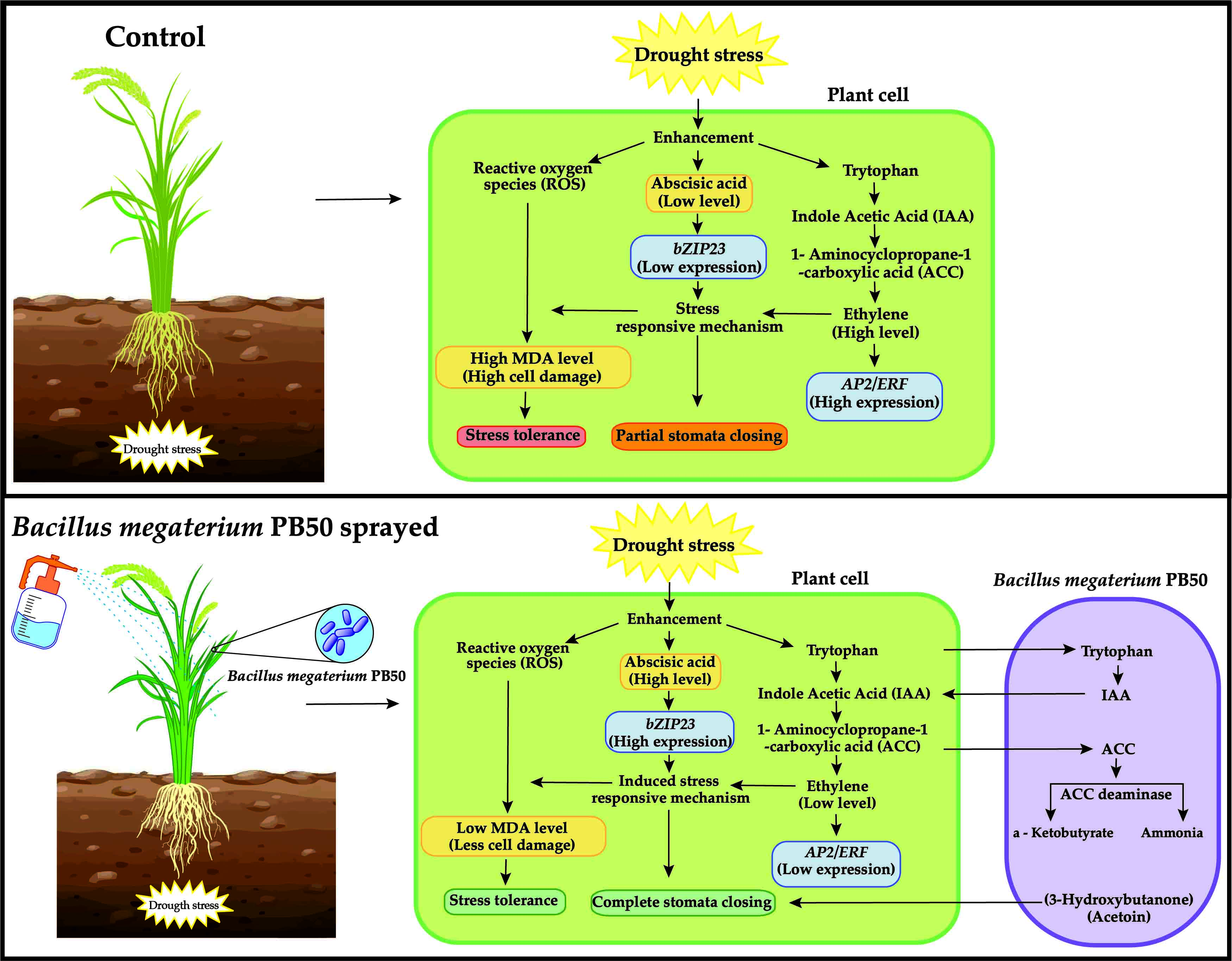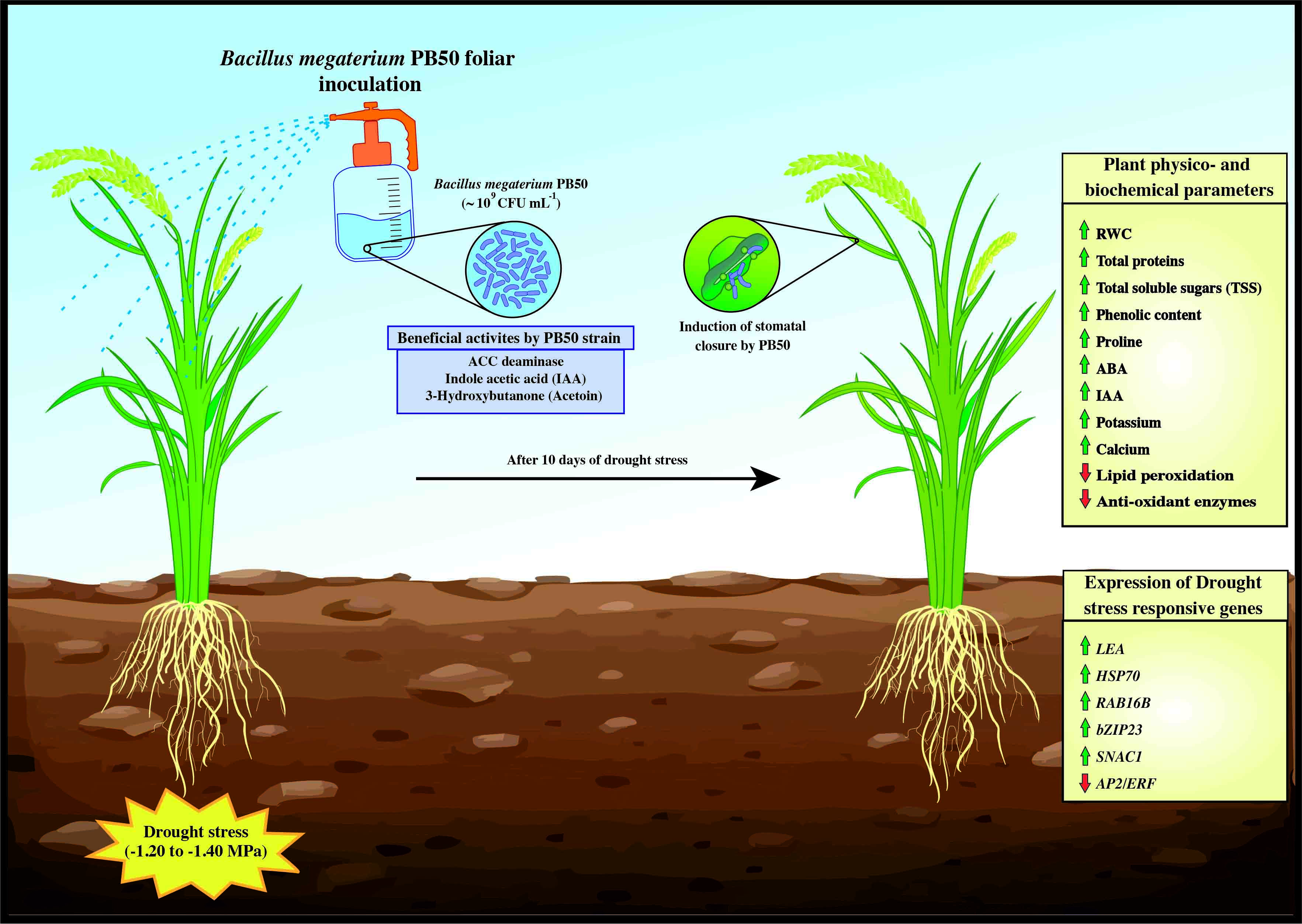Exploring the role of epiphytic phyllosphere bacteria in mitigating drought stress in rice
Background
Rice serves as a fundamental food source for over half of the global population. By 2050, it is estimated that rice production must surge by 40% to satisfy the dietary needs of 9 billion consumers. Rice production is significantly affected by climate change, especially drought, as it requires ample water due to its semi-aquatic nature and sensitivity to drought. Hence, increasing rice production poses significant challenges. Currently, beneficial microbes are gaining more attention with the aim of decreasing chemical fertilizer usage. These microbes are more cost-effective than breeding technology and do not face the stringent regulations associated with genetic engineering. Therefore, this research explores the role of the least-explored phyllosphere bacteria in alleviating drought stress in rice.
Results
Among 44 rice leaf epiphytic phyllosphere bacterial isolates obtained from drought-tolerant rice varieties, eight isolates were identified as tolerant to various abiotic stresses, including temperature stress (50°C), salinity stress (1.2M NaCl), and osmotic stress (11%, 21%, 26%, and 32% PEG 6000). They were identified as Bacillus endophyticus PB3, Bacillus australimaris PB17, Bacillus pumilus PB18, Bacillus safensis PB23, Staphylococcus sciuri PB24, Bacillus altitudinis PB37, Bacillus altitudinis PB46, and Bacillus megaterium PB50. Further screening of these strains revealed their plant growth-promoting (PGP) traits, such as mineral solubilization, production of hydrogen cyanide (HCN), siderophore, exopolysaccharides (EPS), osmolytes, and phytohormones, antagonistic activities against pathogens, and ACC deaminase activity. Among them, B. endophyticus PB3, B. altitudinis PB46, and B. megaterium PB50 exhibited multiple PGP traits and were selected for further evaluation in rice pot culture experiments to assess their effectiveness in alleviating drought stress.

Foliar application of PB3, PB46, and PB50 strains was performed on 65-day-old CO51 rice plants under water-stress (-1.2 MPa) conditions, with untreated plants serving as the control. Physiological assessments showed that PB50-treated plants had reduced stomatal aperture and higher relative water content compared to other water-stress treatments. Biochemical analyses revealed that plants treated with PB50 had higher contents of chlorophyll, carotenoids, total phenolics, total soluble sugars, proline, ABA, IAA, calcium, potassium, and decreased activity of antioxidant enzymes. Notably, PB50-treated plants exhibited reduced lipid peroxidation, indicating decreased cell damage.
Differential expression studies demonstrated heterogeneous expression of drought-responsive genes such as AP2/ERF, bZIP12, DHN, HSP70, LEA, and SNAC1. Foliar application of Bacillus megaterium PB50 resulted in the highest positive fold change in relative gene expression for bZIP12, DHN, HSP70, LEA, and SNAC1.This illustrates the role of the PB50 strain in enhancing stress tolerance and inducing stomatal closure in rice (Fig.1).
While the maximum fold change of AP2/ERF gene was observed in control stress plants, an ethylene-responsive factor gene. The lower expression of the AP2/ERF gene in PB50-treated plants indicates reduced ethylene production, potentially due to ACC deaminase activity. Upon rewatering, PB50-treated plants showed the highest yield compared to other treatments.
The metabolite profile of the PB50 strain was assessed, revealing that the stomatal closure compound 2,3-butanediol increased under osmotic stress. The rice leaf surface colonization potential of the PB50 strain and its ability to induce stomatal closure were also confirmed through scanning electron microscopy analysis.
Conclusions
Overall, the colonization of Bacillus megaterium PB50 on the rice leaf surface and its impact on stomatal behavior and stress-tolerance parameters provide strong evidence for its role in inducing drought stress tolerance in rice. The PB50 strain shows great promise as an effective foliar inoculant for sustainable agriculture, particularly in drought-prone regions with variable rainfall and water supply.
